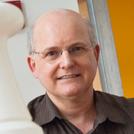
Charles E. Leiserson
Lead Instructor
Professor. Charles E. Leiserson received a B.S. from Yale University in 1975 and a Ph.D. from Carnegie Mellon University in 1981. He joined the MIT faculty in 1981, where he is now Professor of Computer Science and Engineering in the MIT Department of Electrical Engineering and Computer Science and head of the Supertech research group in the MIT Computer Science and Artificial Intelligence Laboratory. Leiserson’s research centers on the theory of parallel computing, especially as it relates to engineering reality. He coauthored the first paper on systolic architectures. He invented the retiming method of digital-circuit optimization and developed the algorithmic theory behind it. On leave from MIT at Thinking Machines Corporation, he designed and led the implementation of the network architecture for the Connection Machine Model CM-5 Supercomputer, which incorporated the “universal” fat-tree interconnection network he developed at MIT. Fat-trees are now the preferred interconnect strategy for Infiniband technology. He introduced the notion of cache-oblivious algorithms, which exploit the memory hierarchy near optimally while containing no tuning parameters for cache size or cache-line length. He developed the Cilk multithreaded programming technology, which featured the first provably efficient work-stealing scheduler. He led the development of several Cilk-based parallel chess-playing programs, winning numerous prizes in international competition. On leave from MIT as Director of System Architecture at Akamai Technologies, he led the engineering team that developed a worldwide content-distribution network numbering over 20,000 Internet servers. He founded Cilk Arts, Inc., which developed the Cilk++ multicore concurrency platform and was acquired by Intel Corporation in 2009. Intel now embeds this technology in their Cilk Plus multithreaded programming environment.
Leiserson has made numerous contributes to computer-science education. He is perhaps best known as coauthor of the textbook, Introduction to Algorithms (The MIT Press), which was named “Best 1990 Professional and Scholarly Book in Computer Science and Data Processing” by the Association of American Publishers. Currently in its third edition, it is the leading textbook on computer algorithms, having sold over 500,000 copies, and is one of the most cited publications in all of computer science. He developed the MIT undergraduate courses on algorithms and on discrete mathematics for computer science. He was for many years the head of the computer-science program for the Singapore-MIT Alliance, one of the first distance-education collaborations, which produced popular video lectures of his undergraduate course on algorithms, which are viewable through MIT OpenCourseWare. He developed MIT’s undergraduate class on software performance engineering, which teaches parallel programming not as an end in itself, but as one of several techniques for writing fast code. His annual workshop on Leadership Skills for Engineering and Science Faculty has educated hundreds of faculty at MIT and around the world in the human issues involved in leading technical teams in academia. He was the founding Workshop Chair for the MIT Undergraduate Practice Opportunities Program (UPOP), which teaches MIT Engineering sophomores how leadership skills can leverage their technical skills in professional environments. He has graduated over two dozen Ph.D. students and supervised more than 60 master’s and bachelor’s theses. Leiserson has won many academic awards. He received the IEEE Computer Society 2014 Taylor L. Booth Education Award “for worldwide computer science education impact through writing a best-selling algorithms textbook, and developing courses on algorithms and parallel programming.” He received the ACM 2013 Paris Kanellakis Theory and Practice Award “for contributions to efficient and robust parallel computation through both provably efficient randomized scheduling protocols and a set of parallel-language primitives constituting the Cilk framework.” He received the ACM 1982 Doctoral Dissertation Award for his Ph.D. thesis, Area-Efficient VLSI Computation. He is a Margaret MacVicar Faculty Fellow at MIT, the highest recognition at MIT for undergraduate teaching. He is a member of the National Academy of Engineering and has been elected Fellow by four professional societies: AAAS, ACM, IEEE, and SIAM.


